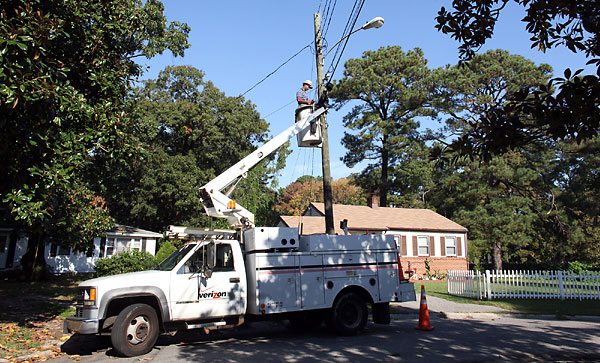LAS VEGAS–Verizon Wireless surprised the telecom industry this week by announcing it would trial 5G in 2016, which is two years before other planned trials. Network densification, along with accessing new, higher-band spectrum, is considered a key part of an ultimate 5G standard, and densification has immediate impacts on quality and reliability of existing networks.
In the run up to the Super Bowl, Verizon and ExteNet Systems are working to deploy some 400 small cells in the downtown area to not only provide capacity needed for Super Bowl fans, but also to improve the wireless experience in the popular tourist destination.
Brian Mecum, Verizon’s VP of Network for the West Area, said, “We’re working pretty hard in San Franciso right now, part of our densification efforts for the Super Bowl. Densification is important because people like to use their smartphones. We talk about people who are cord cutters; there’s an awful lot of cord nevers in downtown San Francisco.”
“We are doing the long march through the city approval process to get our nodes built,” said ExteNet CEO Ross Manire. “The challenge within the city of San Francisco is working through the various approval processes to actually get the nodes constructed. We’re actually … pretty close to complete on the fiber builds, but we’ve still got to get all the nodes approved so we can get those constructed.”
The city is requiring the companies to notify residents about what’s coming, and the city’s wireless planner says that so far there have been just a handful or questions or complaints.
“For months they have been dropping fiber into manholes all around at night downtown,” city wireless planner Omar Masry said in late July. But he said the companies will not be trenching the streets.
“For ExteNet and Verizon, the thing that’s their saving grace to make this work, is that they’re using PG&E (Pacific Gas & Electric) conduit,” said Masry. He said the companies are able to run fiber in the utility’s conduit and then connect to the city-owned light poles. “Without that … this dog don’t hunt.”
Mecum explained during CTIA that 87% of the company’s traffic comes across LTE networks with an increasing emphasis on mobile video; delivering that level of service requires dense metro networks.
“Densfiication, getting dark fiber out there, getting the small cells in there, that’s the direction we’re headed,” he said. “That’s what’s going to give us our ability to deliver to our customers on the promise of reliability.”
He continued: “We’re finding a lot of success also in setting up C-RAN in downtown San Francisco. It’s helping with the ability to put what we call remote radio heads, or high-powered radio heads, that don’t have to have a whole lot of real estate underneath them. The help that that brings us is the ability to not have to disrupt a downtown area with a macro cell site and it also gives us the ability to deploy with dark fiber.”

